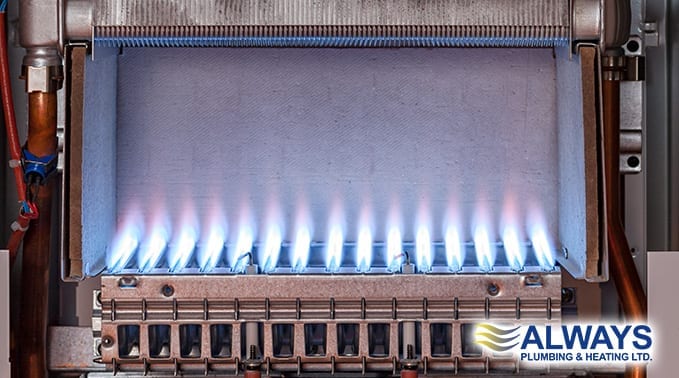It’s winter in Edmonton officially making it your boiler’s busiest time of the year. Boilers offer many heating advantages. They are energy efficient, they can last up to 25 years, and they heat the house more evenly (than a traditional furnace). The downside to having a boiler is that they can be very costly to replace. The good news is that, with proper maintenance, a boiler can last up to twice as long as other heating systems. This winter, use these winter boiler maintenance tips to increase your boiler’s efficiency and extend its life.
- Check and clean boiler filters monthly.
Boiler air filters should be free of anything that can block the heat. Make sure no dirt or dust has built up in the filter, causing the system to overwork and become inefficient.
- Each month, check for a blue flame.
If your boiler has a yellow flame, or no flame, it indicates a possible problem. Call a professional immediately to avoid losing heat or bigger boiler problems.
- Insulate your pipes.
Insulating your pipes will not only prevent them from freezing, but it will reduce the risk of your boiler’s condensate pipes freezing as well. Once your boiler’s condensate pipes have frozen they can be difficult to thaw and lead to boilers breaking down.
- Learn how your boiler works.
Become familiar with your boiler’s owner’s manual. Knowing how it works will help you spot the warning signs of a problem. Understanding a brief history of boilers and how they work can also be of value.
- Regularly check for cracks, holes, or other signs of water leaks.
If you notice any signs of leaks or water coming from your boiler, contact a professional to have it repaired immediately.
- Check the pressure gauge.
Consult the owner’s manual for the proper pressure gauge and check when your boiler is at operating temperature. If the pressure is too high, turn off the boiler and contact a professional immediately. Too much internal pressure can cause the boiler to rupture or explode.
Having your boiler out of operation in the winter in Edmonton is not an option. If you suspect your boiler is not working properly, always call a professional for a diagnosis first. At Always Plumbing & Heating, we provide affordable maintenance and repair services to help extend the lifespan of your boiler. Call us at 780-489-8118 (Edmonton) or 587-601-1253 (Fort McMurray) to schedule an appointment today!
